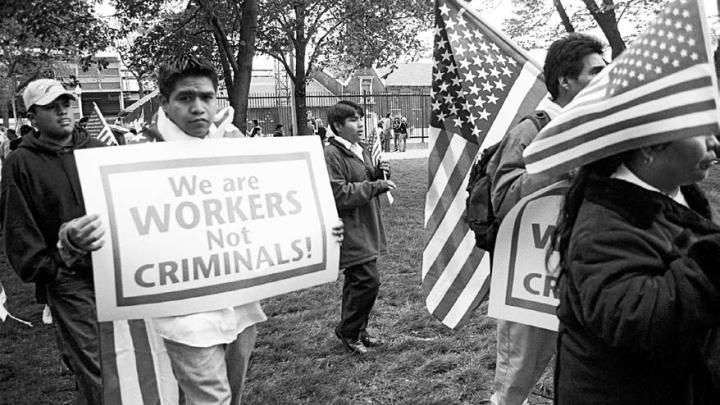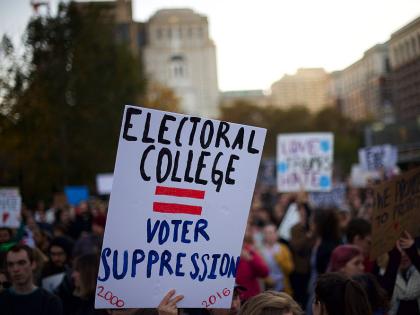First-generation immigrants are more likely to be law-abiding than third-generation Americans of similar socioeconomic status, reports Robert Sampson, Ford professor of the social sciences. These new findings run counter to conventional wisdom, which holds that immigration creates chaos. The prevailing “social disorganization theory” first gained traction in the 1920s and ’30s, after the last big wave of European immigrants poured into the United States. Scholars have maintained that the resulting heterogeneity harmed society. “They weren’t saying that this was caused by any trait of a particular group,” Sampson explains. “Rather, they were saying that lots of mixing would make communication accross groups difficult, make it hard to achieve consensus, and create more crime.”
Yet in Sampson’s recent study, first-generation Latino immigrants offer a particularly vivid counterexample to this common assumption. “They come into the country with low resources and high poverty, so you would expect a high propensity to violence,” Sampson says. But Latinos were less prone to such actions than either blacks or whites—providing the latest evidence that Latinos do better on a range of social indicators, a phenomenon sociologists call the “Latino paradox.”
With colleagues Jeffrey Morenoff of the University of Michigan and Stephen Raudenbush, now of the University of Chicago, Sampson followed 3,000 young people in 180 Chicago neighborhoods from 1995 to 2002. They ranged in age from eight to 25, and came from a full range of income levels and from neighborhoods with varying degrees of integration. Chicago was a deliberate choice: “We felt it was representative of where the country was going,” Sampson explains. The number of Mexican immigrants in the city skyrocketed in the 1990s, and immigration from Poland and Russia also increased, creating an almost equal three-way split in Chicago’s general population among whites, blacks, and Latinos.
During the course of their study, Sampson and his colleagues periodically interviewed the young people on a range of subjects, including asking whether they had been involved in such violent acts as fighting or robbery. The researchers supplemented this data with census, crime, and poverty statistics, and with a separate survey that asked 9,000 Chicago adults about the strength of social networks in their neighborhoods. The investigators then developed mathematical models to determine the probability that a given child would engage in a violent act, and to understand which factors raised or lowered his or her likelihood of violence.
Sampson was surprised to discover that a person’s immigrant status emerged as a stronger indicator of a dispropensity to violence than any other factor, including poverty, ethnic background, and IQ. “It’s just a whopping effect,” he says. Of people born in other countries, he notes, “First-generation immigrants are 45 percent less likely to commit violence than third-generation immigrants, and second-generation immigrants are about 22 percent less likely [to do so] than the third generation.” Mexican Americans were the least violent among those studied, in large part because they were the most likely to be first-generation immigrants, Sampson adds. The study also revealed that neighborhoods matter. “Kids living in neighborhoods with a high concentration of first-generation immigrants have lower rates of violence,” he explains, “even if they aren’t immigrants themselves.”
What makes new arrivals more law-abiding? Sampson theorizes that people who relocate here for the sake of greater opportunity come with a strong work ethic: “They may have a certain motivation to work and not get arrested,” he says. The young Latinos in Sampson’s study were also more likely to live with married adults, which correlated with a lower risk of violence, and to hold conservative opinions regarding drug use and crime, all of which might deter them from breaking the law. Finally, living in a neighborhood with many first-generation immigrants—who appear to bond over their shared experience—generates a dense social network that may steer young people away from crime. It’s likely, Sampson adds, that many of these immigrants are in the country illegally, which may give them “extra incentive to keep a clean record and not commit crimes, in order to avoid deportation.” After a few generations here, however, America’s tradition of “frontier justice” may prompt greater violence, he speculates. “It’s that notion of reacting to insults and taking the law into your own hands,” he says. “You would expect more exposure to that over time.”
When immigration increases, “the culture of violence is diluted,” Sampson suggests. Indeed, he wonders if the last decade’s spike in immigration nationwide might explain the drop in crime in American cities around the same time, an idea he explored in an op-ed piece for the New York Times (“Open Doors Don’t Invite Criminals,” March 11, 2006) published as Congress began to debate immigration reform.
The column prompted a flood of e-mails and letters, including angry rebuttals from groups favoring strict immigration controls and hate mail from individuals. Sampson says he wasn’t surprised: another portion of this research indicates that preconceived notions about foreigners and minorities are tremendously difficult to shake. He and his colleagues found that the presence of Latinos and blacks in a neighborhood creates a perception of disorder, even when levels of crime and disorder are actually low. “People make inferences about neighborhoods very quickly,” he says.
Still, Sampson believes that America’s history as a nation of immigrants means that those who have arrived in the most recent wave will ultimately be accepted into the fold. “At the end of the day, I’m optimistic that this debate will resolve itself in a way that’s consistent with the past,” he says. “I think the data show that the country isn’t going to hell in a handbasket because of immigration.”
~Erin O ’Donnell
Robert Sampson e-mail address: rsampson@wjh.harvard.edu








